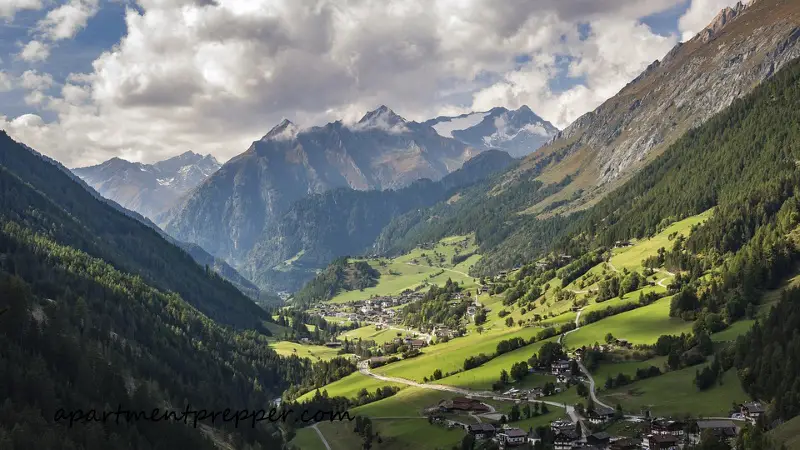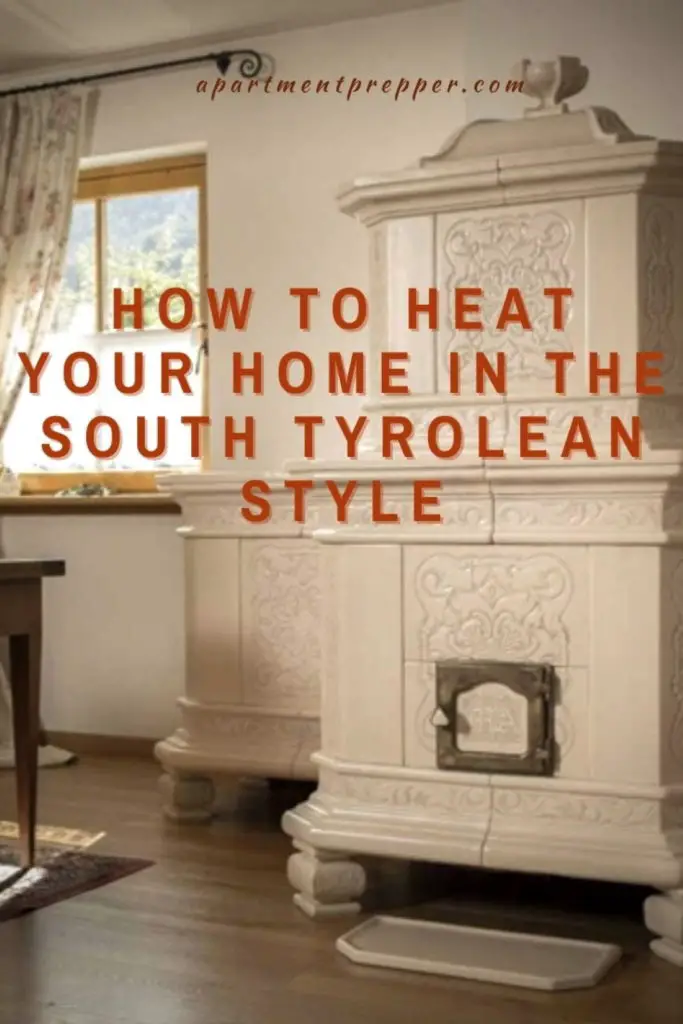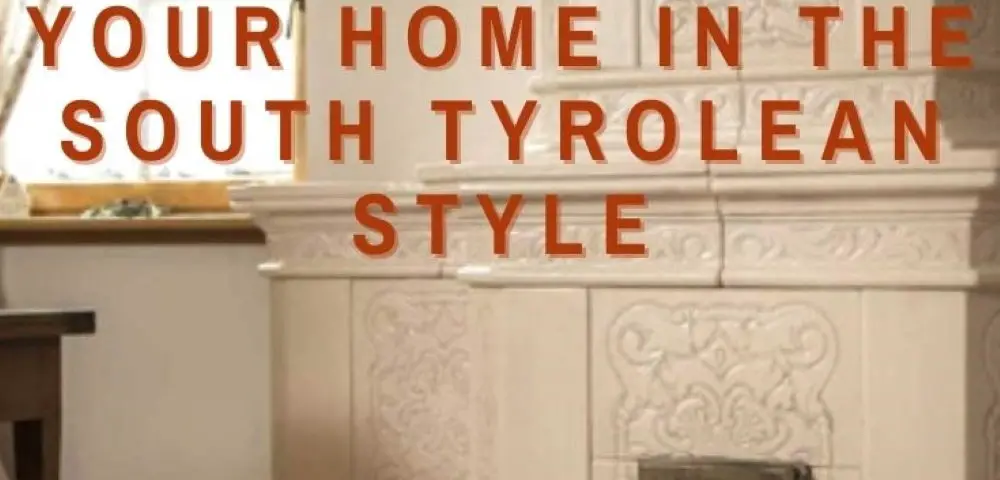by Kyt Lyn Walken
Introduction
As winter season is knocking at the doors, the most of us are going to face issues relating to heating. Maintenance, ordinary functioning and unexpected problems are part of our winter days and nights. We, as preppers, know perfectly how useless it is to postpone these kind of issues.
We need to act in preparation of the worse, as part of our mindset.
Heating our places makes no exception.
In recent years, the solid presence of social platforms where to exchange ideas and concerns made all of us less local and more “global”.
In fact, the interaction with people located overseas can definitely be seen as a plus value. We can learn from mutual other cultures and traditions, and get the best out of it in terms of experience and, obviously… heating systems.
This article is offered by a contributing writer who currently lives in the Northern Italy. Just a hour drive from one of the coldest corners of the World, the Alps.
The purpose of this piece is to show you a different way to heat houses, in the pure & true South Tyrolean style. A particular stove which has great benefits, either in economical either in practical perspective.

Cold on the Alps
“[…] Don’t build a glass house if you’re worried about saving money on heating.[…]” – Philip Johnson
Actually, I am pretty familiar with the alpine tradition on how to heat houses since childhood.
Personally speaking, I experienced “The Great Cold” and I remember a distinctive episode I would like to share with you all.
When I was a child, my parents used to heat our bed by putting a hot brick (previously warmed inside a stove) inside the sheets. We had no heating system inside our home on the Alps.
That was indeed the most effective way to not freeze when getting to sleep!
The cold on the Alpine area can be brutal. Additionally, it can last till late Spring, evening with violent snowfalls. In some cases, snow reached even 13 feet high.
People who are local to these areas developed and fine-tuned a distinctive kind of stove through the years.
The Stube, the traditional South-Tyrolean stove, is what we are talking about. South Tyrol is in northern Italy, right beneath Austria.
Heating systems in South Tyrol
“Nothing burns like the cold.” – George R.R. Martin
The Stube (“stove“) is a heating system which allows you to significantly save on energy.

In addition to that, it offers the chance to have optimal heat throughout the house without heat loss and without making the temperature change from one room to another.
Last but not least, it contributes to keep the environment in reducing polluting gas emissions, which is the real thing in the perspective of global warming.
The Stube, the Tyrolean wood stove, has indeed an initial price which is higher than the traditional heating systems. Nonetheless, it is easily amortized thanks to the guarantee of reducing energy consumption as well as low operating costs.
The Stube is made entirely of majolica and for this reason particularly appreciated for its classy visual effect.
Choosing this type of heating means significantly saving fuel without the requirement of an additional heating system.
In order to make sure that you can truly take advantage of all these pros, it is necessary to know the functioning of the stove itself:
– costs
– pros and cons
– the European manufacturers
The Tyrolean stove is generally made through a 100% artisanal process.
In fact, each constituent element of the stove, starting from the creation of the individual majolica ole, as well as the process of cooking the tiles in the oven is carried out manually by long-time craftsmen.
The characteristic of the process of creation of the Stube allows this heating system to have not only aesthetic power but above all a high thermal efficiency.
It comes from the particular firing of the majolica to capture and to retain heat.
Then the Stube gradually releases it all over the rooms.
This stove works greatly even in large houses with several floors.
You can actually find several Tyrolean stove solutions on the market.
For this specific reason it is essential to know how they work, in order to better choose the one that best suits your home to save money.
The most common Tyrolean stoves are:
• the full traditional Tyrolean stove
• the Tyrolean storage stove
The full traditional Tyrolean stove is built without a grill.
It has the ability to accumulate heat even in the very ground of the system itself.
In fact, the wood burns inside the combustion chamber above a bed of ash. This, specifically, involves a continuous insertion of firewood.
The second type, the Tyrolean storage stove, happens to be the most comfortable, functional and practical heating system.
It is powered by vegetable biomass.
Furthermore, the Tyrolean storage stove guarantees the highest energy efficiency thanks to several reasons:
– property of the material
– the accumulation system of the combustion heat in the system lining
– the capacity to release the heat slowly all inside your home.
The Tyrolean storage stove: how to choose the best for your house
“[…] Historically, we have lived in a nation of energy dependence. Dependence on others for our heating and electricity, and for our fuel for transportation.[…]” – Mike Pompeo
The Tyrolean storage stove gets significant importance in saving energy, especially with a single floor house.
In fact, you don’t need any extra heating system.
Furthermore, it goes without saying that the Tyrolean storage stove allows for greater autonomy of combustion and heat as it is perfectly efficient even when the fire is off.
The embers still guarantee a small autonomy, but the coating material increases the permanence of heat along with its diffusion and conservation throughout the whole environment.
In fact, the Tyrolean storage stove has a very short combustion phase ranging from three to four hours.
It depends on the load of wood and its level of humidity or seasoning.
Nevertheless, it is also equipped with a high thermal efficiency thanks to the combustion chamber construction material and particular conformations.
They allow to reach high temperatures – around about 1112 ° F- in an amazing short time, by reducing fuel consumption during the heat distribution phase.
The secret behind the Tyrolean stove
The secret of the potential of the Tyrolean storage stove lies precisely in the high combustion temperature.
Let’s go more into details.
When wood burns at low temperatures, it releases unburnt gases into the environment; they increase heat losses and they have a devastating environmental impact.
In the Tyrolean storage stove type, starting from the combustion chamber, the smoke is introduced into the flue gas system.
It consists of a sort of serpentine path made of refractory material, to which it transfers part of the heat.
Only after coming through this system and having also exploited the heat of the fumes, the exhaust smoke is eventually expelled from the flue.
In such a way, the heat is released into the environment under the form of radiant heat.
This helps to reduce the convection currents of the diffusion of traditional heating.
At the same time, it ensures the healthiness of the air together with a pleasant warmth.
Saving money on the maintenance and fuel of the Tyrolean stove
Another pro of the Stube is the total absence of any electromechanical parts.
For this reason it does not require specific maintenance or repairs which are related to possible blackouts, power shortage or even faults in other components of the entire heating system.
Furthermore, in order to install a Tyrolean stove, the sizing of the system is envisaged based on the cubic meters to be heated.
You need to consider that this type of stove consumes approximately 17 – 39 lb of wood per day with loading intervals from 12 at 48 hours.
This means that in a house of 3500 square feet, you need about 40-50 quintals of firewood 8800 lb per year.
Save money on hot water with a Tyrolean stove
In the design and construction phase of your Tyrolean stove, you can also incorporate convective heat exchangers inside the combustion chamber.
This enables you to ensure water heating of domestic hot water up to 400-500 liters without using any electric pumps which will definitely increase the whole electricity consumption.
It is also possible to save on heating with the heat recovery of the high energy efficiency Tyrolean stove, integrating mechanical ventilation systems with heat recovery.
Prices and conclusions
The initial price of a Tyrolean stove is particularly high, but easily amortized over time thanks to the significant energy savings of wood fuel.
• the full traditional Tyrolean stove around: $5000
• the Tyrolean storage stove: around $6000
It goes without saying the the Stube doesn’t happen to be the cheapest on the market, but the investment you make well worth the money.
As mentioned above, it has been proven to be one of the most reliable and effective heating systems and it works greatly especially for those houses which are located in the remote, humid and cold areas.
About the author:
Kyt Lyn Walken is Official Representative and Instructor for Hull’s Tracking School (Virginia) and Antipoaching Certified Ranger for Conservation Rangers Operations Worldwide Inc. (Colorado).
She’s a long time Prepper and Survivalist and she wrote several articles and essays on this topic.
We are an affiliate of Amazon.com, which means we received a small commission if you click through one of our Amazon links when you shop, at totally no cost to you. This helps keep the lights on at the blog. Thanks!



Interesting article. When I was a child, my parents heated with wood stoves. And I, myself, heated with high-efficiency wood stoves while raising my own children. Upon retiring, I bought a house that happened to contain a “Russian fireplace” and that’s what we heat with today, 20 years later. I love it. (And I love the feeling of independence that heating with wood gives me.) Design-wise, the Tyrolean stove contains horizontal baffles while the Russian fireplace employs vertical baffles. These stoves (or fireplaces) are of ancient design. Both are ceramic. And ceramics were around long before metal. But a ceramic stove or fireplace is extremely heavy and not-at-all portable. Down in the basement, my Russian fireplace has two jack posts or floor jacks under it to support the weight. You might want to consult with your landlord before installing one in your apartment.
Hi Ron, That is cool you have a Russian fireplace in your home. Good point. I think the Tyrolean stove has a nice, efficient design and would be more suitable to homeowners. The cost is also too prohibitive for renters and not portable. Thanks for the comment.